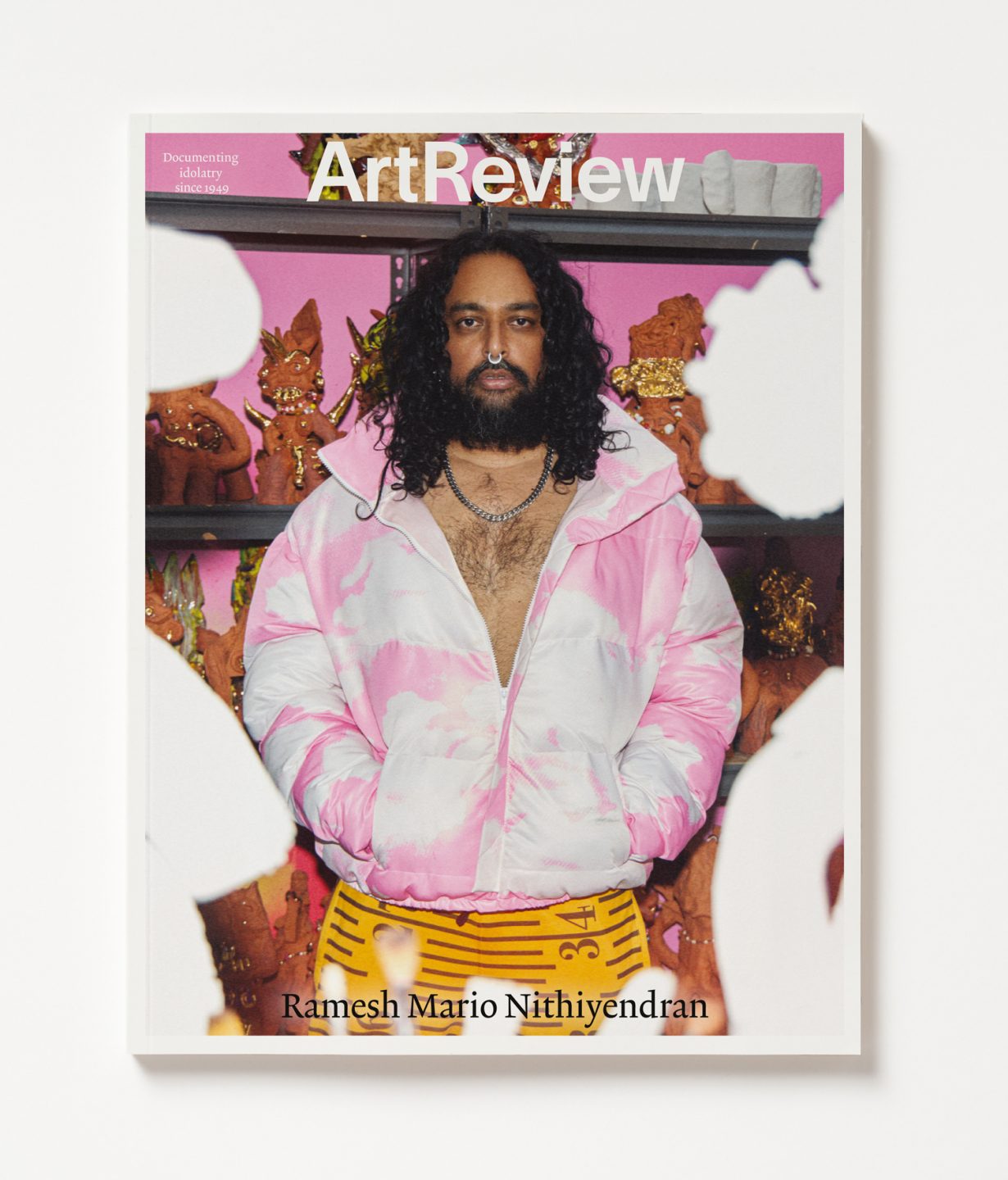Featuring Ramesh Mario Nithiyendran, Tadáskía and Grace Wales Bonner; a special focus on ‘Art and Class’; columns on real-life animation, minimalist eating and ‘literature’; and much more

‘An avatar (a word that derives from Sanskrit) is at once you and not you. A single and a multiple. A physical embodiment as distinct from a spiritual essence.’ Ahead of Ramesh Mario Nithiyendran’s solo exhibition at Glasow’s Tramway, Mark Rappolt talks to the Sydney-based artist about the inspirations behind his colourful sculptures, created mostly in ceramic and bronze. Taking points of reference from idolatry found in the Hindu religion, identity politics and pop culture (such as video games, cinema, graffiti and advertising), Nithiyendran’s work – which includes large-scale kinetic installations – results in a Frankensteinian mishmash of artistic traditions from the West and East. ‘In part Nithiyendran is driving towards an idea of sculpture as an animate form,’ writes Rappolt. ‘Not the common-sense or traditional idea of a static and eternal monument, but something that embraces change and ephemerality. Something that is constantly between states.’
Nathalie Olah and Mitch Speed consider the subject of ‘Art and Class’ in a two-essay focus on, respectively, how class and those in the position to arbitrate what exactly that means affects representation and means of production. ‘Cheap, fast consumerism is the only available source of joy to people robbed of time, freedom and choice,’ Olah writes, ‘and to have those objects of desire ridiculed and mocked in the space of the gallery, is too easy, too low: the pitiful and grotty demand for cheap goods as the symptom of a sick society in perpetual decline? It’s scornful.’ Olah points to the work of Finnish artist Pilvi Takala (whose performance art centres around state control, surveillance and social structures) and Germany-based artist Sung Tieu (whose multimedia work interrogates cultural class divides and the dehumanising web of state apparatus and bureaucracy), as examples of ways in which art can confront issues of class by revealing the conditions that lead to the creation of social divides. Meanwhile, Mitch Speed dissects the ways in which the artworld, and being an artist within that world, is increasingly limited to the purview of the already-wealthy, or those who have access to it – and their tastes and judgements of what makes ‘high’ art. As well as economic class divides, Speed points to discrimination based on race, ethnic background, sex, religion, worldview, disability, age and sexual identity as forms of ostracisation from an artworld that ‘has been so thoroughly annexed by the ruling class that we have lost the ability to imagine how it could meaningfully serve anyone else.’
Mariacarla Molé looks at the format of diary writing as a method for preserving events and moments in sitú. In 2009, art-historian Vittoria Martini was invited by Swiss artist Thomas Hirschhorn to attend his Bijlmer Spinoza-Festival project in Amsterdam, which took the form of a temporary monument and activated by lectures, workshops, published newspapers; she spent two months (the duration of the artwork) documenting and trying to give definition to a work that was configured as a festival but affirmed (by the artist) as a single sculpture. In light of Martini’s recently published book, Thomas Hirschhorn: The Bijlmer Spinoza-Festival, The Ambassador’s Diary (2023), Molè considers how the narration of an art event, experienced both collectively and individually, but written from the perspective of an art-historian, is expected yet fails to remain objective in light of Martini’s role as a resident ‘ambassador’. This experience led to a new methodology of art historical writing termed by Martini as ‘precarious art history’: Molè explains, ‘It’s a form of writing that renounces theory for experience, critical distance for the deeply involved; that imposes itself as action and reaction in a productive and tangible way, rather than as theoretical and invisible thinking.’ And one that reflects the temporary and precarious nature of Hirschhorn’s sculptural event spaces.
Also in this issue
Guilherme Teixeira interviews Tadáskía, whose work encompasses installations, drawing, bookmaking, textiles and photography; Emily McDermott talks to fashion designer Grace Wales Bonner, who finds inspiration for her garments in literature, art, the spiritual and the traditions of West Africa and the Caribbean; Adam Thirlwell examines the word ‘literature’ – and whether it can only ever mean writing that is reactionary and stagnant, rather than dynamic and fluid; Amber Husain takes a stab at the trend in luxury minimalist eating, and asks whether it really is of a piece with other forms of voluntary starvation; as real-life technology catches up to the futures animation has depicted, Jamie Sutcliffe asks what lies behind the dazzling and flawed predictions of a promised world; and Kuba Szreder considers the ways in which museums are attempting to change their exhibition models and support the artistic ecosystems surrounding their institutions.
Plus
Reviews of Sarah Lucas, Christian Marclay, Sable Elyse Smith, Benjemin Senior, Steirischer Herbst 2023, EVA International 2023; book reviews of JG Ballard, Charlie Porter and Maria Fusco; and much more.